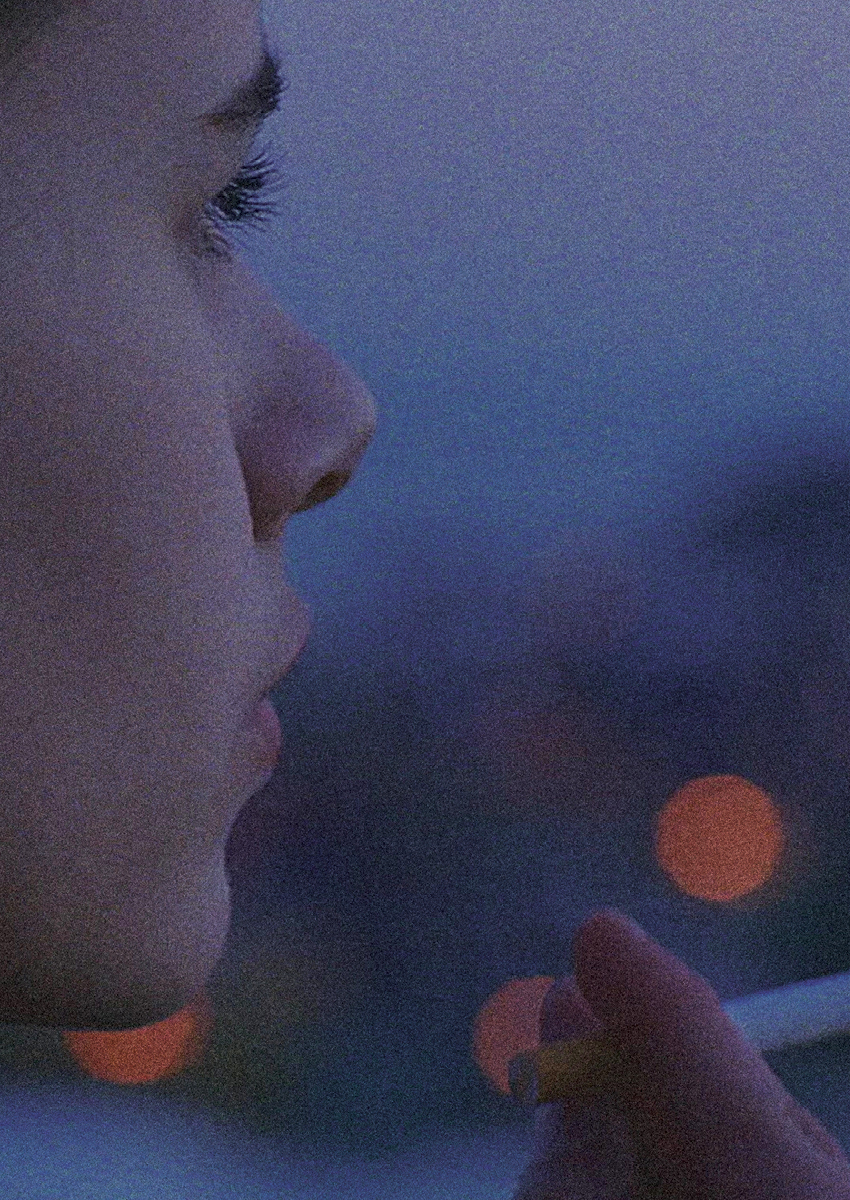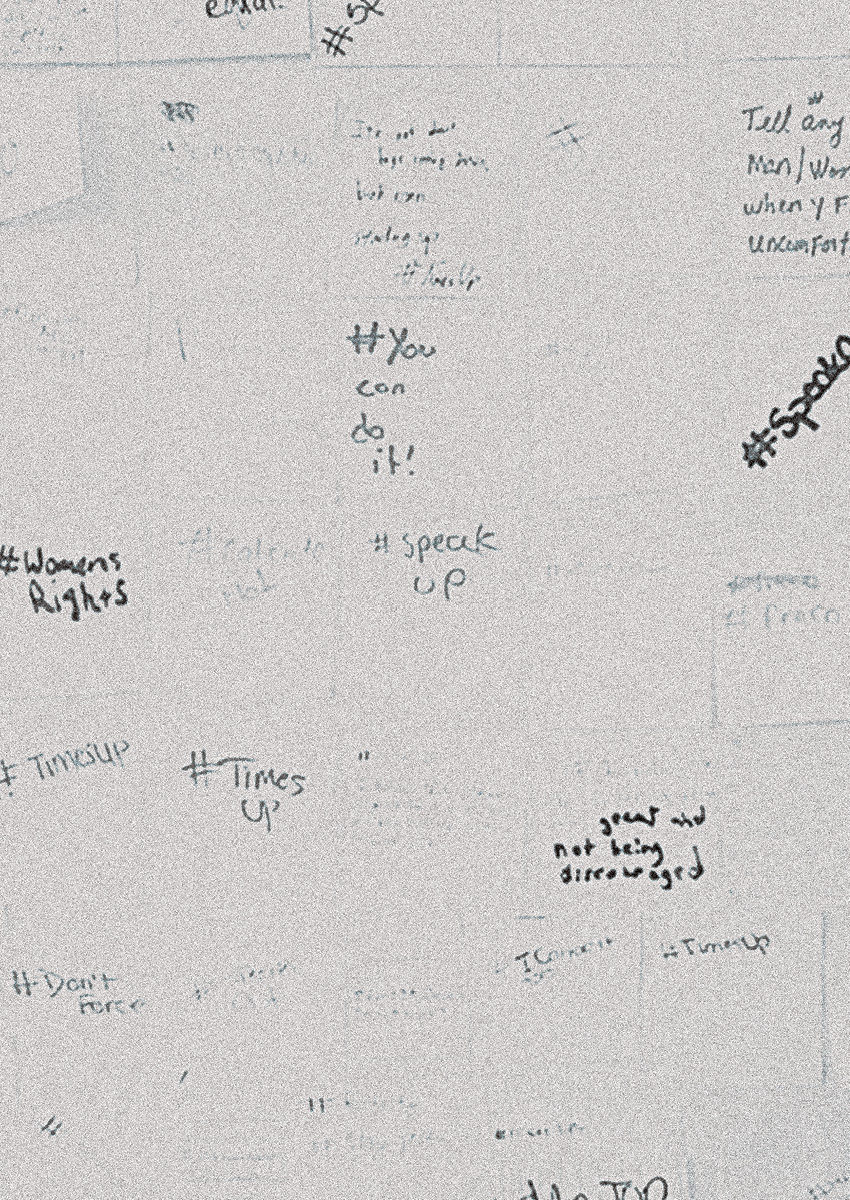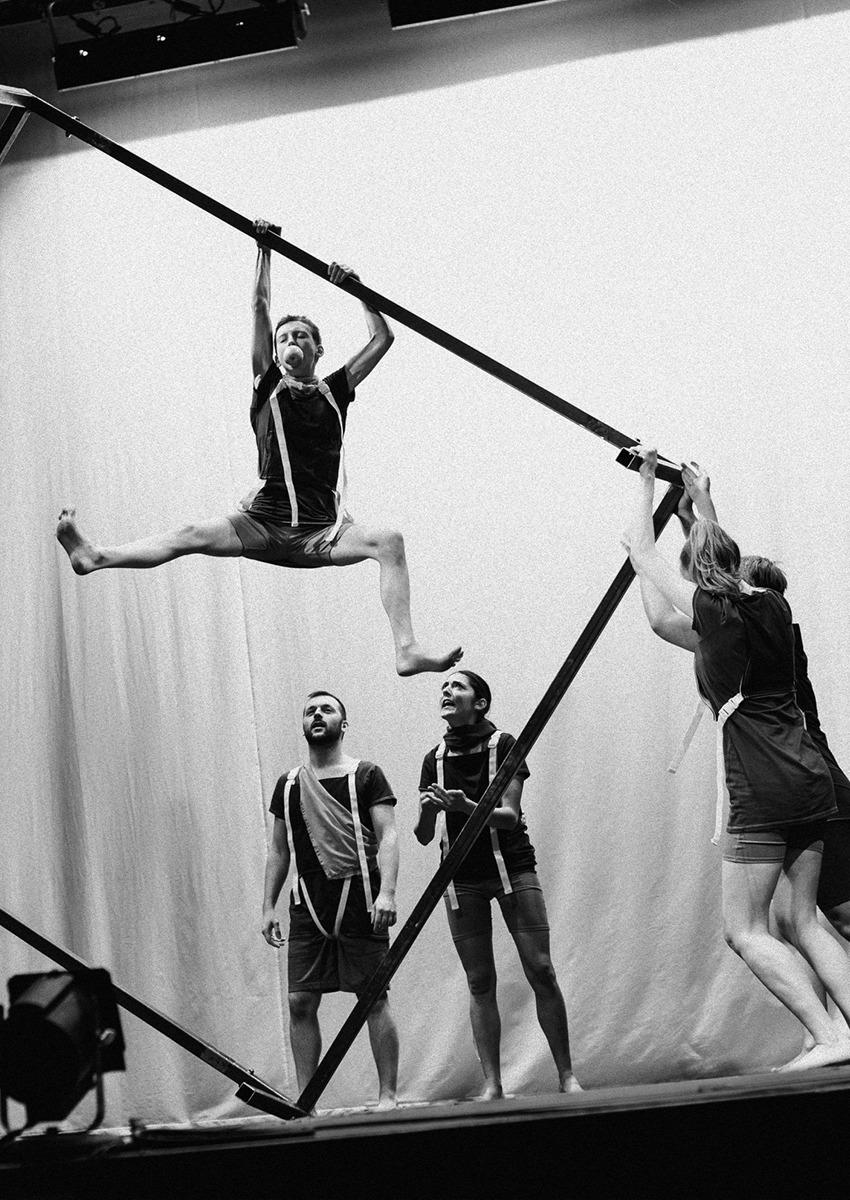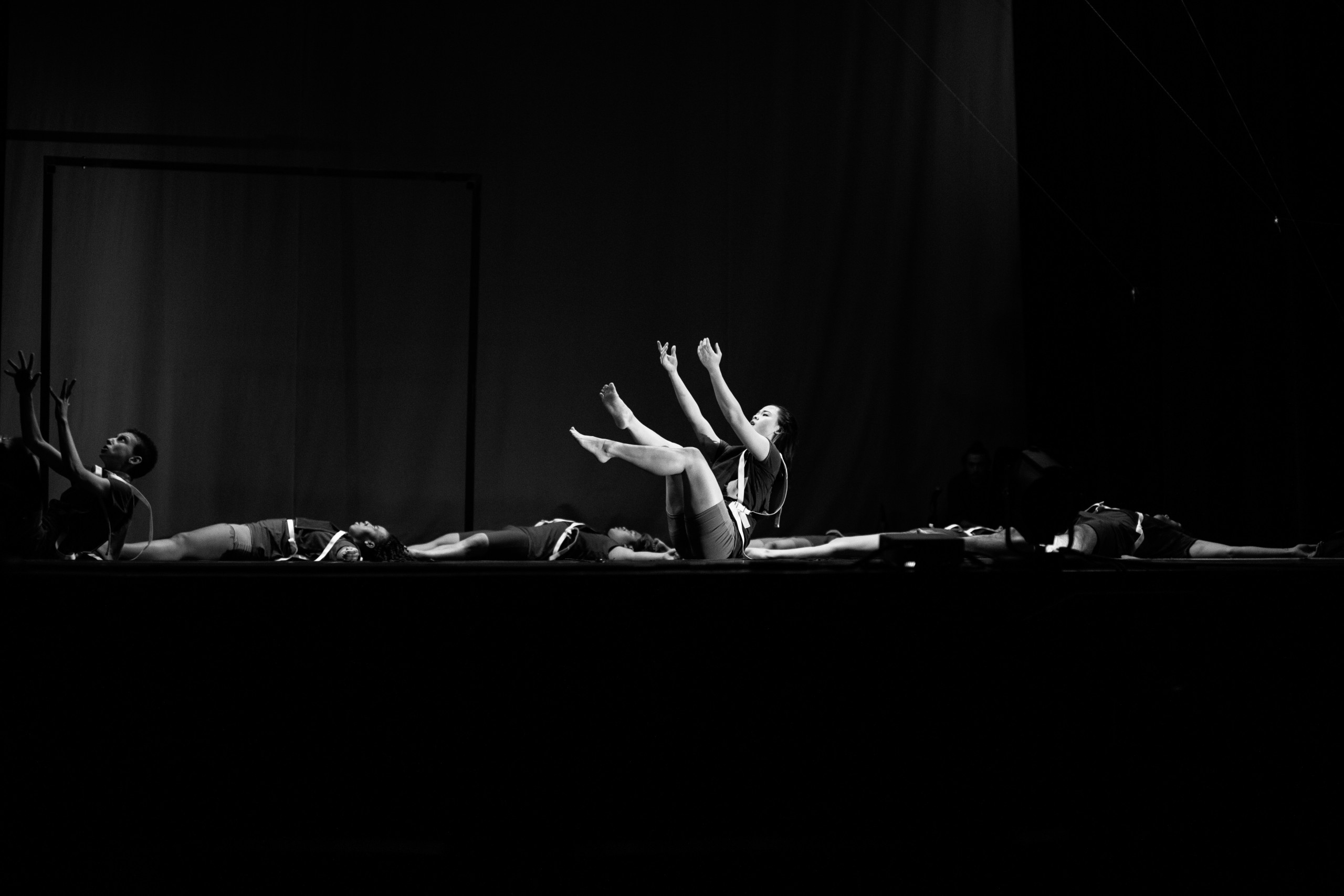Pratt graduates are confronting today’s most intractable challenges—from war and displacement, to poverty and neglect, to racial and gender-based hostility. Seen through the experiences of young people, these issues take on clarified resonance. Pratt alumna Maria Gabriele Baker, MFA Writing ’17, interviews Pratt artists working in film, dance, and storytelling, delving into the discoveries made while working with and among those coming of age in a connected but conflicted era.

Detail of still from Myrsini Aristidou’s film Aria (courtesy of the artist)
Myrsini Aristidou, BFA Film and Art History ’13, a filmmaker, follows young protagonists in Cyprus and Greece as they face challenges of an adult world in her films Semele and Aria. Aristidou started her artistic career studying painting but discovered her love of filmmaking after being exposed to the range of practices at Pratt. She received a grant from the Spike Lee Film Production Fund to create Aria, which was an official selection at a number of festivals, including Venice and Sundance in 2018.
In her film Semele, the relationship of a girl with her long-absent father, a laborer who struggles to care for his daughter, forms the basis of the subtle narrative, which unfolds from the child’s point of view. With a note from school as an excuse to reconnect with her dad, Semele takes a dusty journey through industrialized Cyprus to visit her father at his work site. While it’s clear he’s initially disgruntled by her presence, as the day progresses, a mutual understanding awakens.
Aristidou’s second short film, Aria, opens at an Athens kebab shop where the film’s eponymous 17-year-old protagonist is waiting for a driving lesson with her father. When he finally arrives, it is not to go for a drive—instead, he leaves her to look after a young Chinese immigrant who speaks neither Greek nor English. Aria must decide her next moves and how to do right by another when she herself has been cast aside.
Maria Gabriele Baker: What drew you to inhabit or create space for the stories of youth? Was the impetus personal, political, or a mixture of factors?
Myrsini Aristidou: I think both of the films are sourced from personal experiences. Semele for me is an exploration that shifts beyond a parent-and-child relationship as it sets out to further question any relationship of love/exchange between two people. There is an underlying understanding between the two characters, certain feelings and behaviors, which are universal. However, in Aria, there is an evolution in subject matter and context, as it deals with a mixture of political and current social concerns. For me, both films explore and expose how fragile and vulnerable human relationships are, and how important it is to accept oneself in order to take the leap forward and transcend.
MGB: How are Semele’s and Aria’s experiences influenced by their class, gender, and race? To me, the intersections of all these identity markers are particularly present in Aria.
MA: There is a political undertone in both Semele and Aria, in that you can deduce the economic instability of both countries, in the first case Cyprus and then Greece. This atmospheric uncertainty is inevitably affecting the behaviors, jobs, and attitudes of the heroes. However, it’s also what becomes the catalyst that encourages these characters to seek a better future, to dream, and to allow for their feelings to exist. When I write, I always try to address prime elements of our human nature, by focusing mostly on exploring the emotions of a certain experience. The social class, gender, or race surely affects the circumstances in the development of the plot, but it is never at the core of the emotion that I aim to explore within the story.
MGB: Your young protagonists’ perspective is the sole perspective of your films. Can you say a little more about the technical means by which you achieve capturing your protagonists’ point of view of the world?
MA: With the use of a handheld camera, I try to remain as subjective as possible to the child’s/teenager’s perspective of the world. Staying close to the characters with the camera also helps in really feeling and breathing the energy of the person, while they are walking, talking, moving.
MGB: Do you think we generally underestimate children’s comprehension of their own world?
MA: Possibly. As adults, we feel that we have a certain sense of responsibility towards children, exactly because they are not grown enough to have any financial responsibility, and we mistakenly think that they are also emotionally unaware. But I do believe that children are incredibly intelligent, hypersensitive, and operate in a higher level of consciousness to their surroundings. We most certainly ought to experience the world more like them.
MGB: Do you believe there are entrenched and crucial differences in the way adults see the world vs. how young adults and children see it?
MA: Age/time doesn’t necessarily define our level of consciousness. However, I think it may certainly enhance our acceptance towards the rest of the world, and ultimately towards our self.
MGB: How can we continue to bridge the gaps in the ways adults and children or young adults experience the world?
MA: Certainly [by encouraging] an effort to increase our awareness toward the sensitivity of children. There is a truth and an innocence that exist in a child’s mind that we should always aspire to.

Detail of young women’s responses to Natalie Riquelmy’s workshop exercise “What is your #?”
Natalie Riquelmy, MFA Writing ’18, a poet and educator, worked with the young women (aka the Strong Sophisticated Sisters, or S.S.S.) of El Puente Academy for Peace and Justice in Williamsburg, Brooklyn, to help them discover how they might tell their own stories and create space for their peers to do the same. Rather than steering the students toward creating something concrete, the work became about setting the stage for dialogue around social concerns that played out in real time in the young women’s lives. Bringing their sessions with Riquelmy full circle, the S.S.S. created a workshop for their fellow students focused on sharing experiences around themes of body positivity, self-perception, and peer validation at the school’s annual Fly Girl Fest. Riquelmy’s teaching was part of the Pratt graduate writing program’s fieldwork component, in which writers link their practice to a community initiative.
Maria Gabriele Baker: How did you decide to devote your MFA fieldwork to creating space for the voices of young women?
Natalie Riquelmy: My fieldwork for the MFA program initially came out of poems from my thesis that were centered on navigating predominantly male spaces as a woman of color. I was already teaching at El Puente Academy for Peace and Justice, and had contact with the young women’s after-school group, so I thought it might be interesting to start talking about this kind of survival with them for the sake of promoting rigorous questioning and consideration of the ways in which we show up in the world and have to move through it. Doing this work with young people is critical for providing tools and building support systems that they can use as they continue to develop and construct their identities—and is something I know I could have benefited from when I was a teenager.
MGB: What defines the world the girls you work with are trying to navigate?
NR: The world [they] are trying to navigate is one that does not want [them] to exist—meaning that there are [harmful or hostile] structures in place within our communities and society at large. I do not want to generalize, as I know that despite all of the young women being women of color, there are other ways in which they either gain or lose privilege. However, they live in a climate where young men their age are calling them “females” [in a pejorative sense] and derogatory terms and fostering an atmosphere of competitiveness between young women. Many of them come from low-income neighborhoods. Many of them are affected by the cycle of poverty, which bleeds into different parts of their lives. The world many of them know is of survival.
MGB: How did you create an environment conducive to sharing and listening in your meetings?
NR: For one meeting, I brought in readings by June Jordan and Audre Lorde to get us started on talking about how we piece together our identities. Being that this was happening after school, the young women didn’t exactly want to read and therefore disengaged. At that point, I knew that the best I could do was open the floor for them to talk about what they wanted to talk about. They did use what I brought up as a starting point, and then went on to talk about social justice movements and whether or not they actually work.
One young lady spoke rather pessimistically, saying that despite efforts toward equality, women are still treated badly and seen as inferior to men. This led to a debate between her and other members who focused on the incremental progression of the ways in which women are viewed and show up in society. Other facilitators and I interjected only when discussions got heated or repetitive. For me, at that moment, holding space just meant allowing myself to trust them in their own navigation of space with one another. It meant giving them time to process in the ways they needed to.
MGB: Do you believe there are entrenched and crucial differences in the way adults see the world vs. how young adults and children see it?
NR: From my experience, I’ve noticed insecurity and fear of failure or living up to expectations on both ends of the age spectrum. For me, the difference is how those things are coped with and worked through. Because adults have spent more time navigating life, they perhaps have learned methods of negotiating space and identity in ways that work for their survival, whereas youth may not have.
MGB: Do you think we, as adults, underestimate children’s comprehension of their own world?
NR: Absolutely. We as a society tend to see things so linearly, so when we think about development, we think of it as something that begins at its most basic level as a child and is most complex as an adult. I believe that children have this magic, incredible ability to sense what is happening around them before others do. I believe that fear has the potential to accumulate with age. How do we connect with the youth within us in order to conjure new ways of being and thinking, or being without fear of being?
MGB: What does it take to successfully bridge the differences in the ways adults and young people experience the world?
NR: Creating opportunities for young people to voice their opinions and have those opinions validated by their peers and adults. Creating opportunities for adults to do the same. If we as adults are able to honor and integrate the experiences and knowledge of our youth in our practice, said practice and relationships can only become stronger.

A scene from Miranda Dahl’s performance Haidar; photo by Kevin Conlon
Miranda Dahl, BFA Printmaking ’18, an artist and choreographer, explores childhood and loss of innocence in a time of war through movement, stagecraft, and sound in her performance work Haidar. After developing Haidar with two students at Central Saint Martins in London, where she was studying abroad, Dahl re-created the piece as part of her Pratt thesis, presenting it at Memorial Hall last spring, with fellow Pratt students Alistair Chew, assistant director, and Sara Knapp, Daniella Brown, and Yuyi Shen, performers, adding their diverse perspectives to the creation of this evolving, collaborative work.
Haidar’s story takes shape through physical theater and dance that engage with a weighty metal sculpture onstage, which the actors build and deconstruct throughout the show— a symbol of the difficult transition from youth to adulthood and from home to isolation. The narrative focuses on the self-discovery of a boy, Haidar, and his preadolescent friends exploring what it means to be an adult—in particular, a man— amid a stark, war-torn world. Told in a palindromic framework, the show reverses at its midpoint to explore the same sequence of events through the eyes of Haidar’s female friend, Radiah, but to a very different outcome.
Maria Gabriele Baker: Can you say a few words about the origin of this project? Was it a personally and/or politically motivated idea to create space for the stories of children?
Miranda Dahl: The refugee crisis while I was in Europe was something [my codirectors, Jordan Chandler and Dorothy Graham, and I] could very directly witness the effects of. We felt that it was a topic that needed to be addressed, and the best way for us to do that was through our artwork. We decided that the palindrome—a construction that can be read the same forward and backward—would be a perfect framework because of its representation of a circular history.
During our research process we ended up meeting a young Syrian boy, about 10 years old, whose answers to some of our questions demonstrated such a maturity. We became interested in a child’s interpretation of masculinity and how adult themes could be expressed just as powerfully through a youthful gaze.
Haidar is most definitely political in its focus on the refugee crisis, but the show’s content is very abstract in that its narrative may not be completely understood in a linear fashion. Rather, we leave the show open to interpretation—if the audience can connect with one single scene and empathize with our adolescent main characters, then they can empathize with the refugee existing in the real world.
MGB: Would you say that elements of class and race play into the protagonists’ particular experiences?
MD: Class and race are absolutely present topics within the show, though I think these themes are also explored within the actual casting of the show, as well. We felt strongly that our cast be as diverse as possible and that we represented many countries and ethnicities onstage so that we could address how the refugee crisis is a global issue that affects everyone and that any one of us could be forced into this situation.
MGB: Do you believe there are entrenched and crucial differences in the way adults see the world vs. how young adults and children see it?
MD: I think that adults often become set in their ways. They view things as more cut and dry than children, who have a stubbornness and vitality to keep questioning their perceptions of their surroundings.
MGB: I notice that the child’s world/Haidar’s world is strongly defined by borders and structure— the large, transformable, square frame creates a container that holds, at least initially, a safe childhood, right?
MD: You are absolutely correct! One of the biggest components of this show was working within the, what some might say, limitation of confined space. However, that “limitation” actually offers a more innovative approach to the hierarchy of space and guides the creative process for choreography. Having structure and borders at first seems comfortable— just like as a child having certain rules that must be followed gives a clear sense of morality. However, when we break those borders and disrupt that structure, we have to work our way through this uncertainty until we find a solution.
